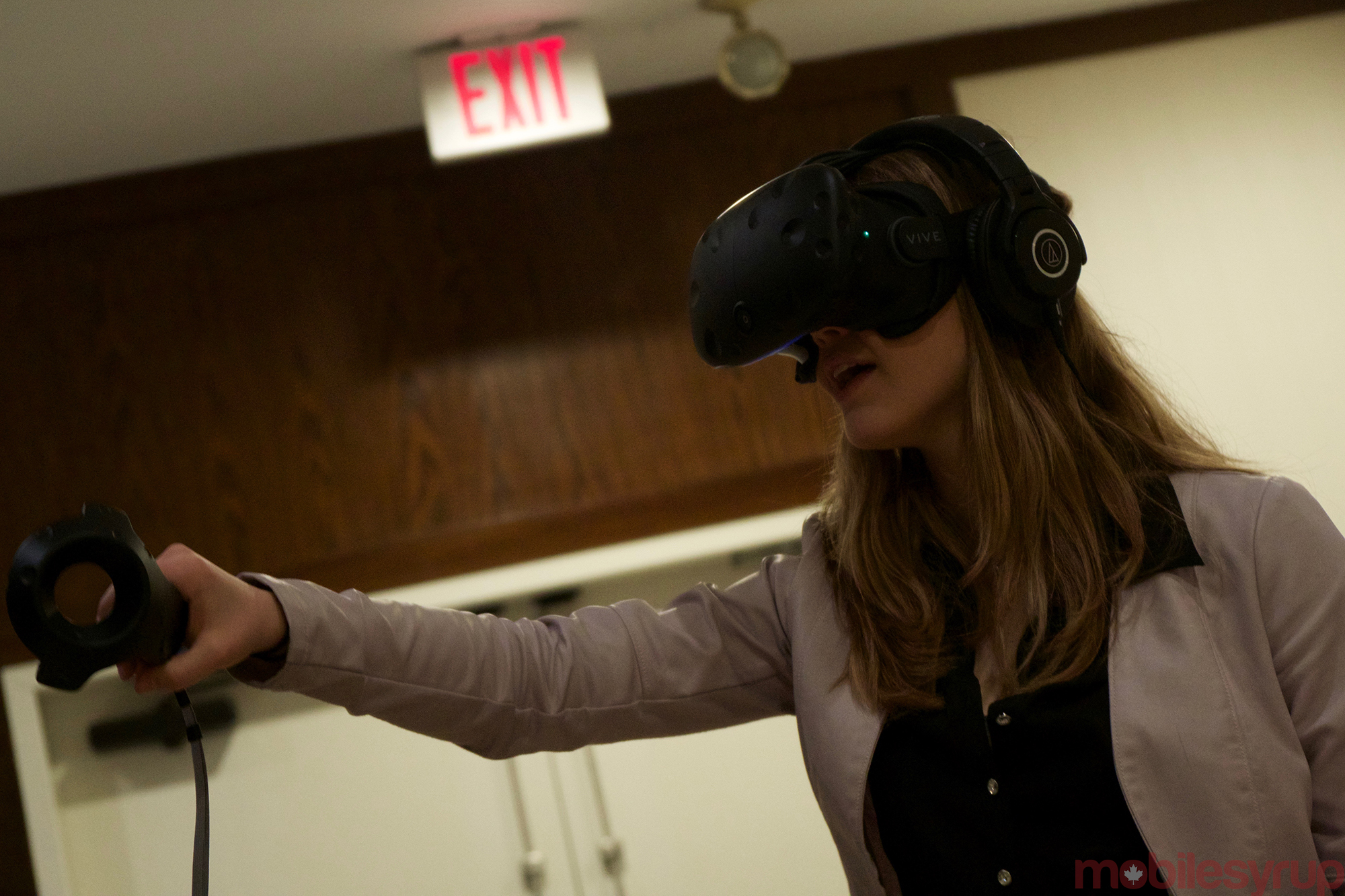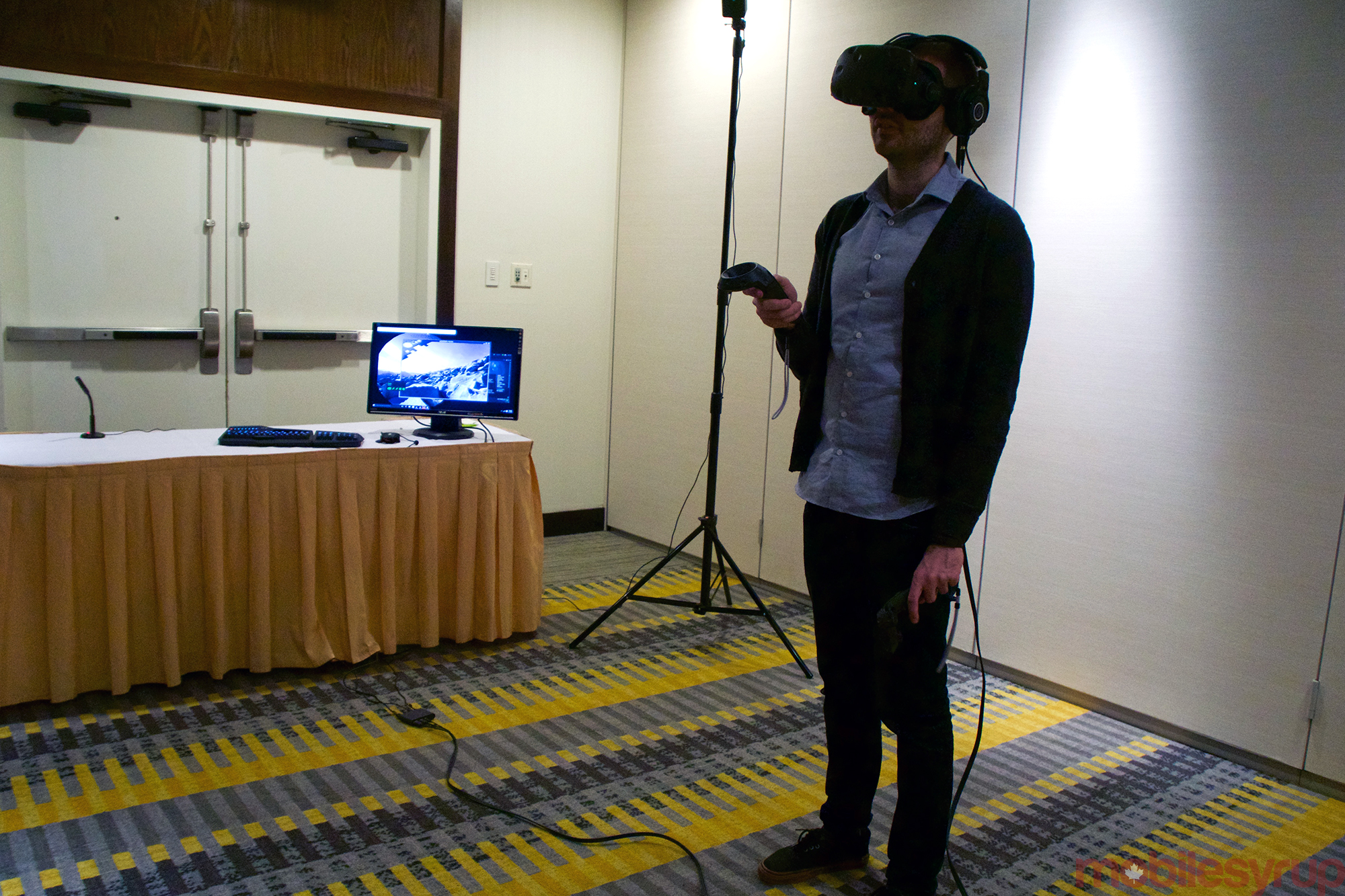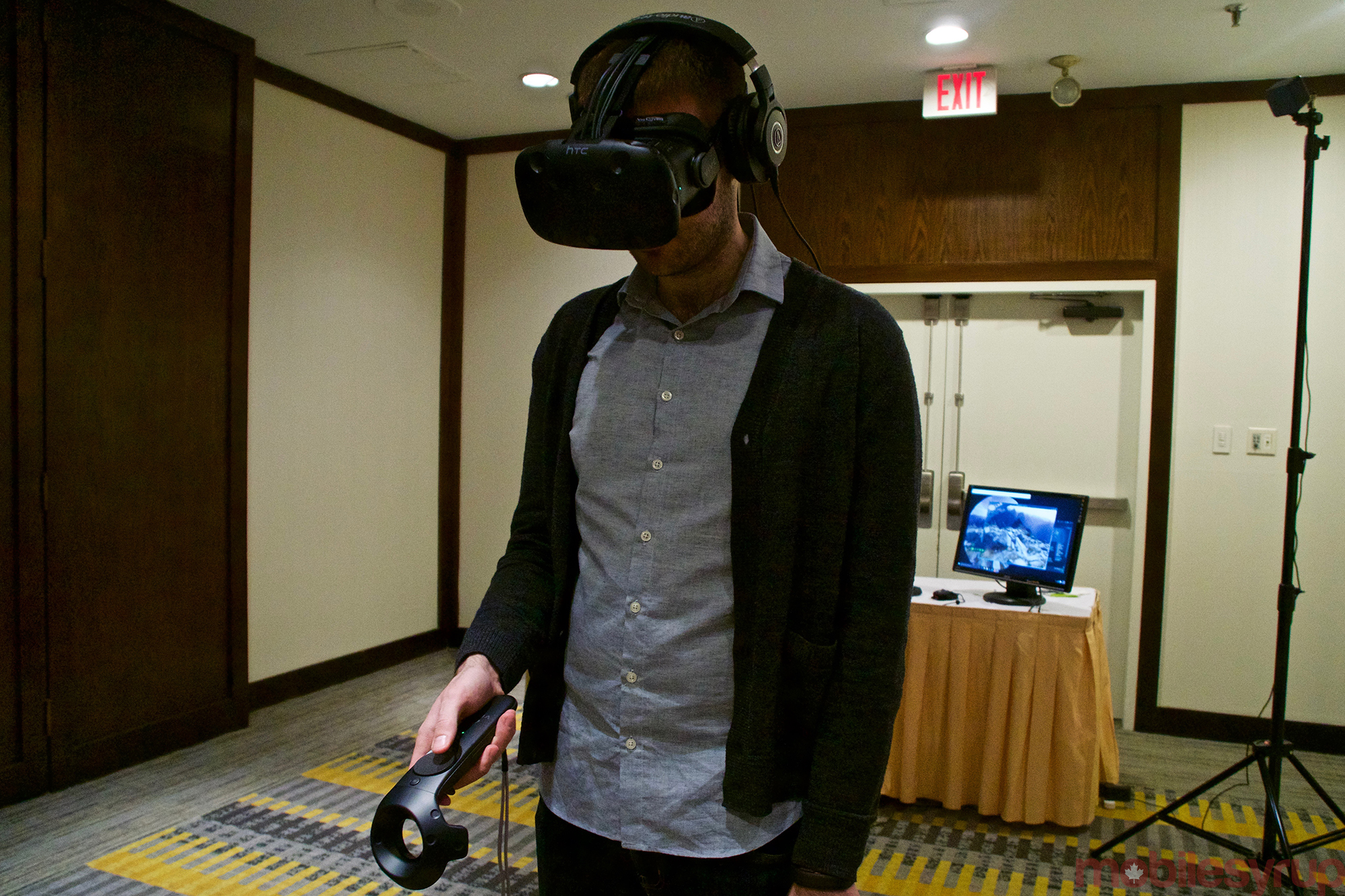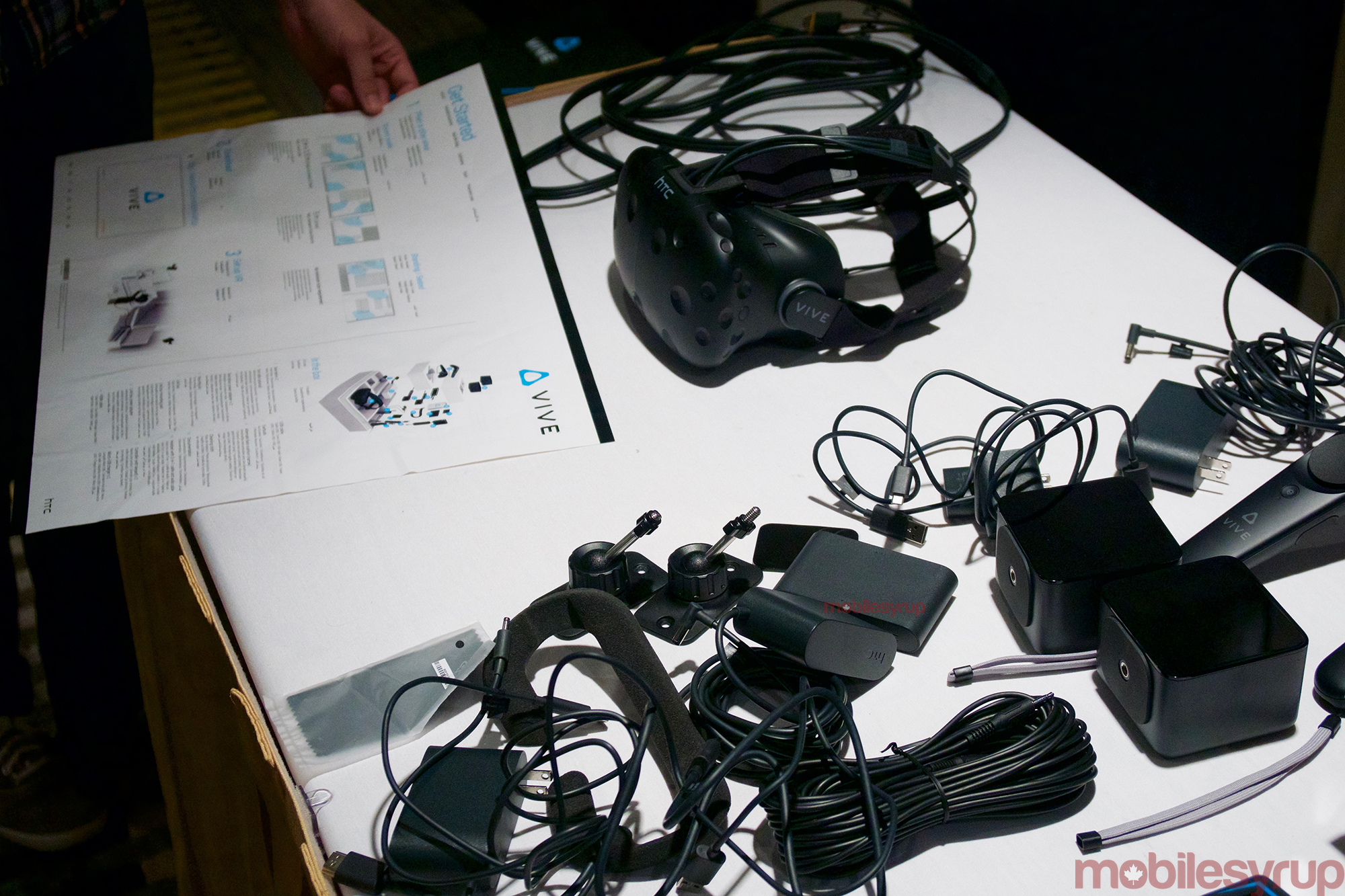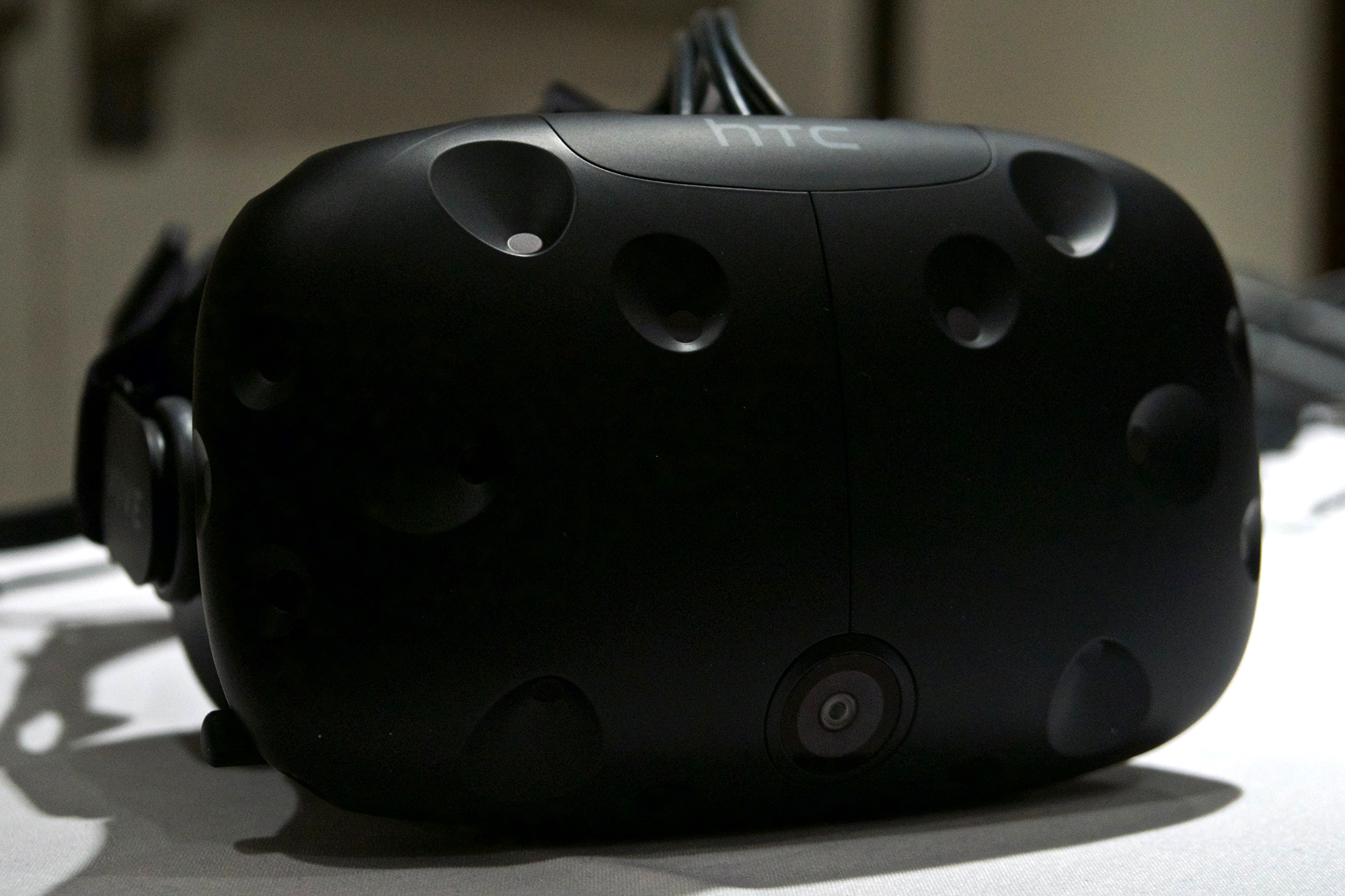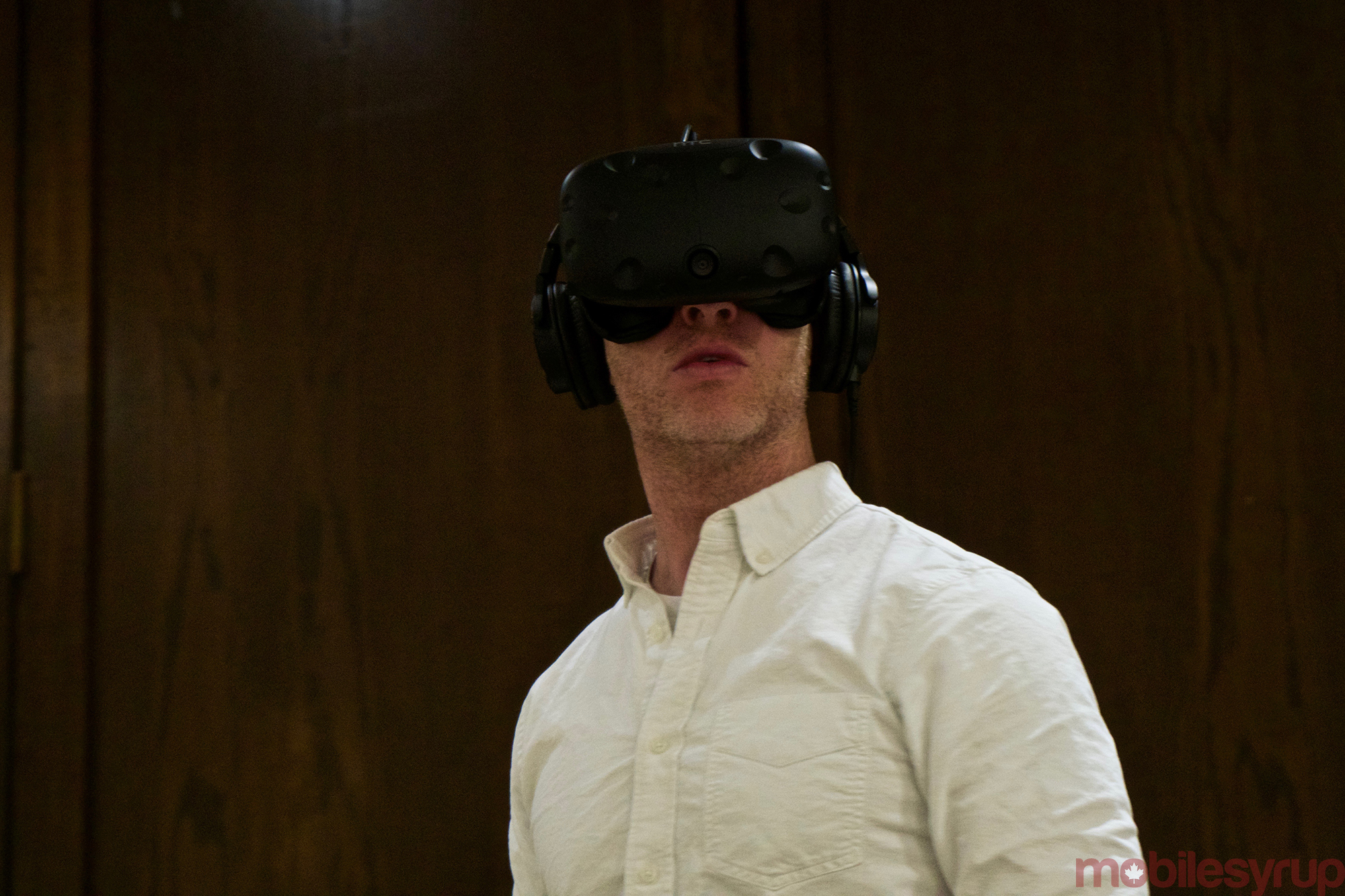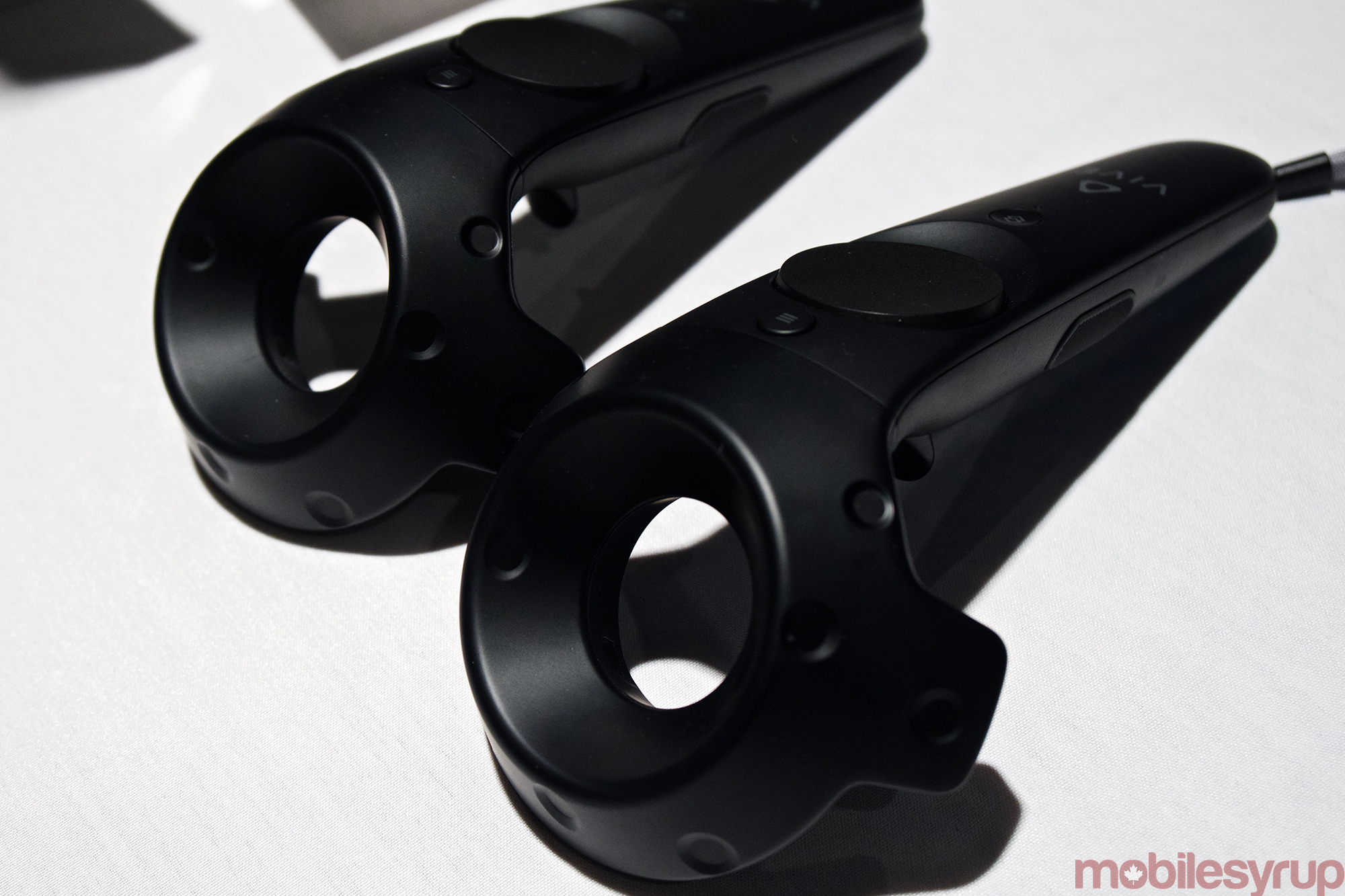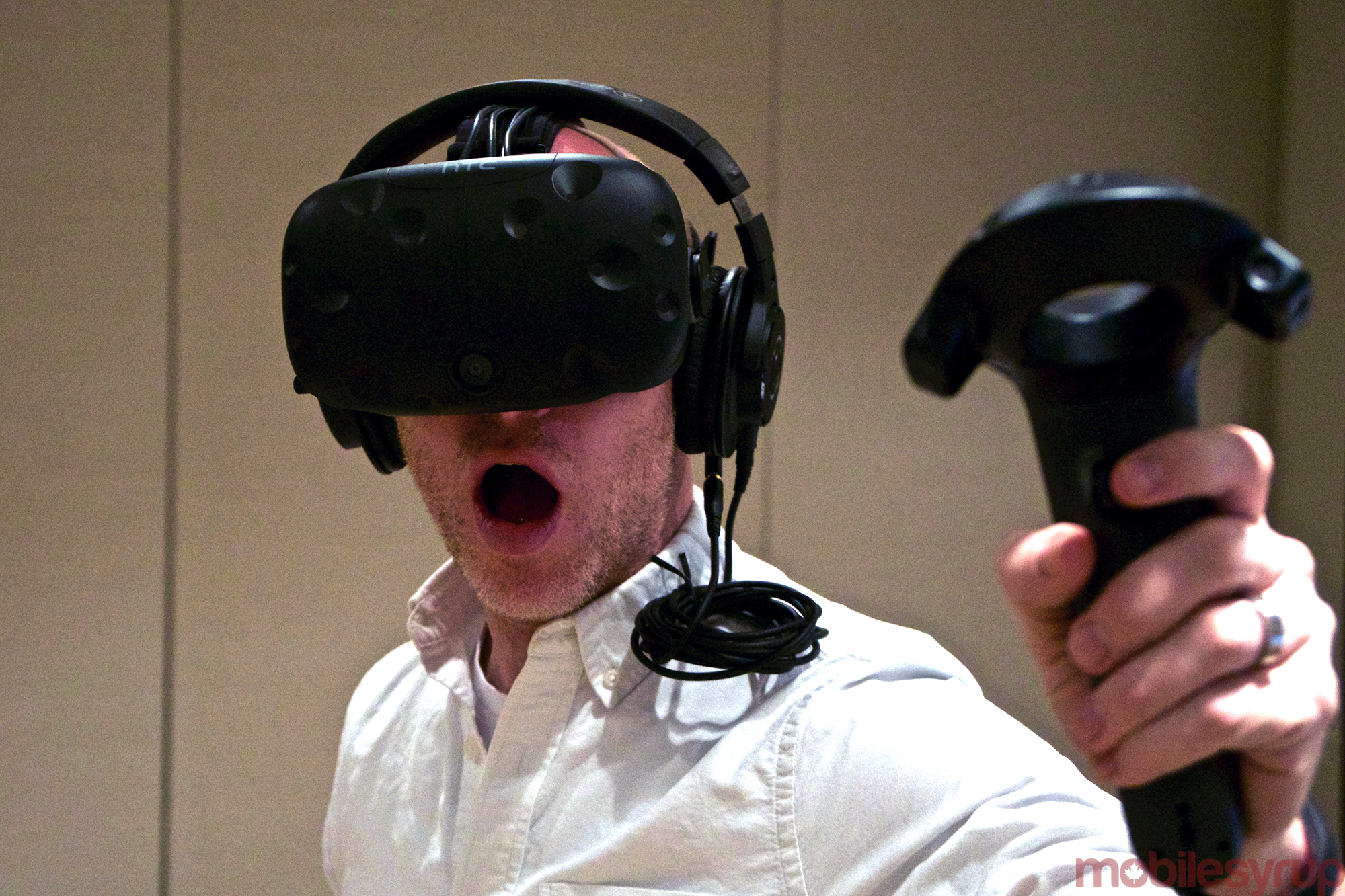
Why VR doesn’t make your vision better
By Rose Behar
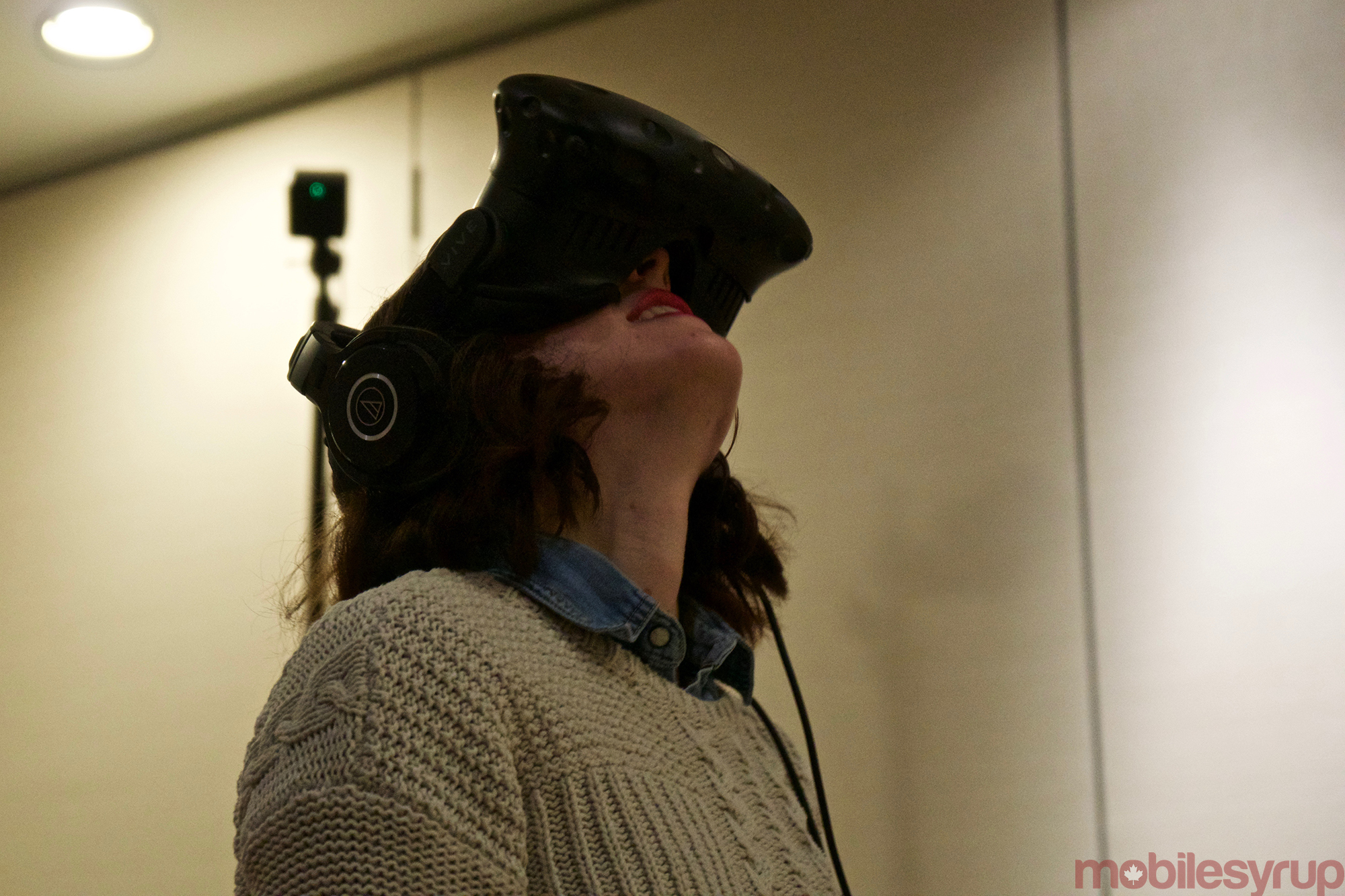
Having only tried out the lower end of VR previously – Samsung’s Gear VR and LG 360 VR headsets – I had no idea what I was in for when I crammed my head into the HTC Vive.
The first thing I noticed was that everything was blurry. That’s because I’m nearsighted, but I’ve always wondered whether or not I should be able to wear VR headsets without my glasses. After all, the entirety of the action is happening mere millimetres from my eyes. Besides, when I tried the LG headset I was able to see alright, with only minor fuzziness.
Turns out with the Vive, it’s a no-go. My vision wasn’t as blurry in virtual reality as it is in real life, but it was bad enough that I had to tap out and put on my glasses before continuing. Which is unfortunate, because the fact that you can’t see out of all angles of your eyes limits how deeply you can immerse yourself in VR.
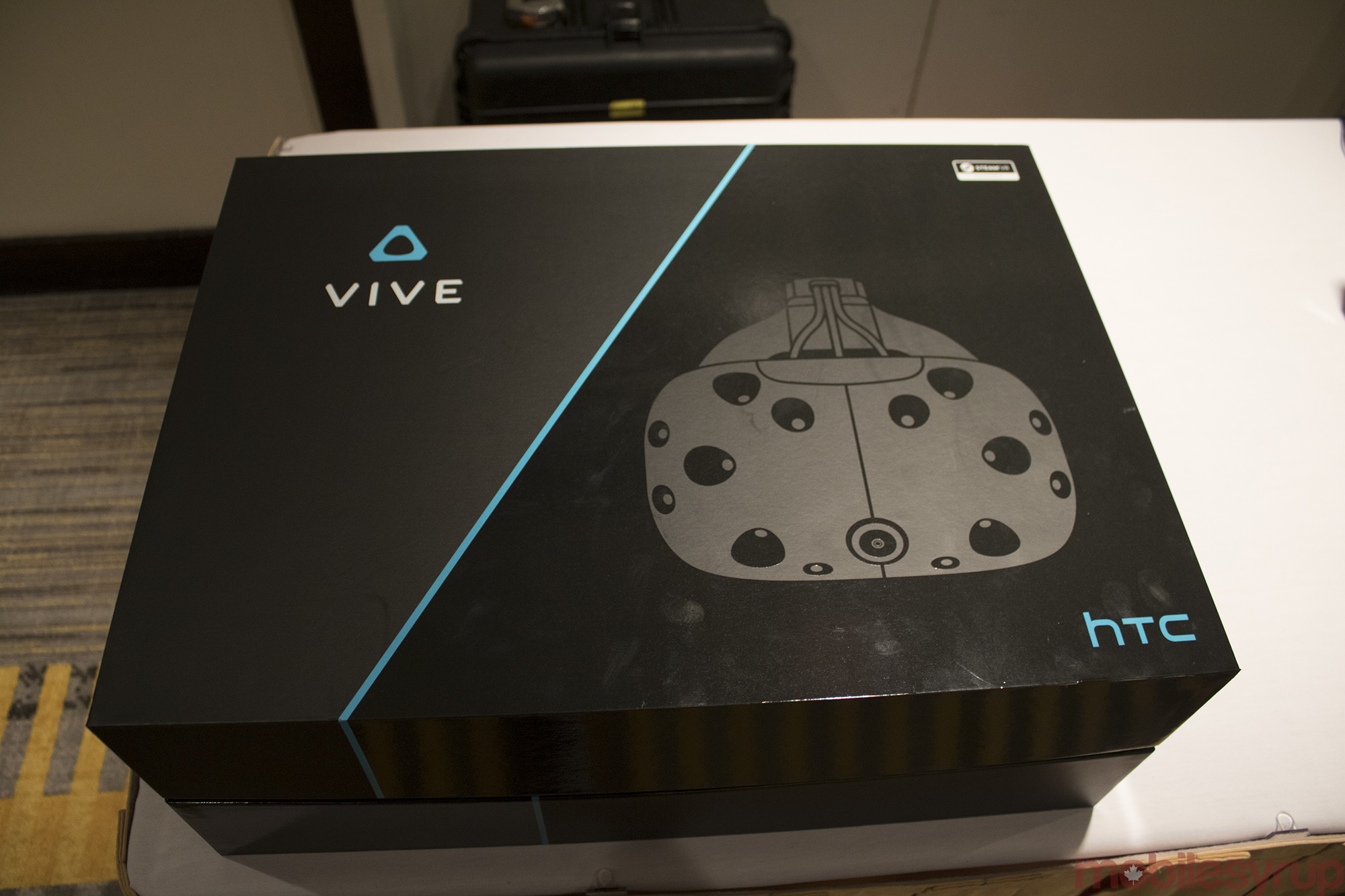
Wondering why VR didn’t fix my vision, I turned to my good friend Reddit. Turns out there was already a discussion on the subject: “If I am nearsighted, would I be able to wear a virtual reality headset like the Oculus Rift and see perfectly, regardless of the virtual draw distance?”
The top-voted answer from a year ago stated that yes, it did work, in much the same way that putting your phone on camera mode and holding it in front of your eyes allows nearsighted people to see distances without their glasses.
That backs up my experience with the LG headset, and one of my nearsighted colleagues confirmed that he doesn’t need his glasses or contacts to use Samsung Gear VR.
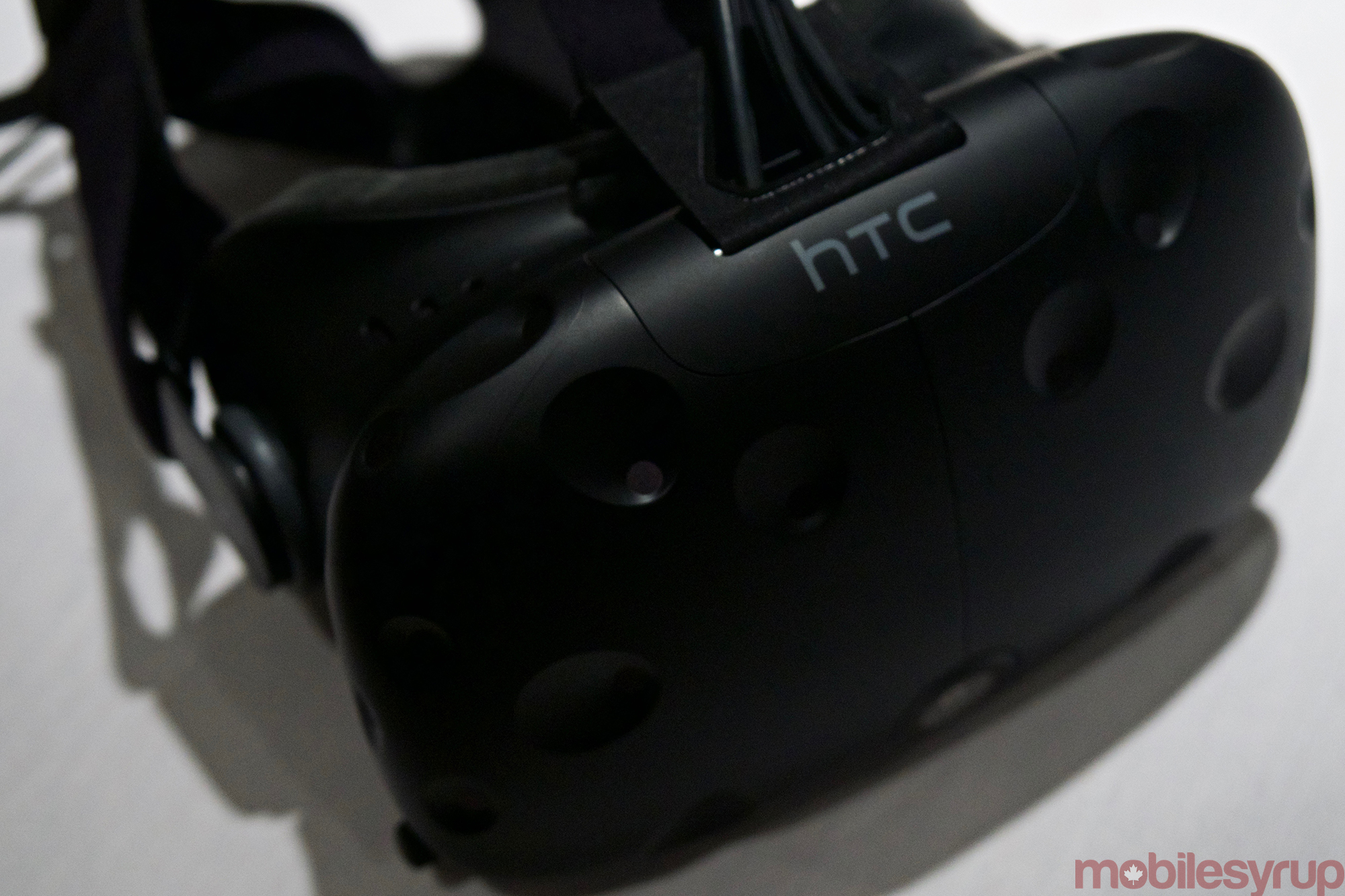
So why is the Vive different? One user who had the same issue I did, except with the Oculus Rift, stated that the issue was caused because: “It has lenses between your eyes and the screen, and you effectively focus at infinity.”
Infinity focus is an optical term that refers to a lens forming an image of an object an infinite distance away. Essentially, the Vive and Rift simulate distance so well that it tricks your eyes.
Once I crammed my glasses in the headset and began to play, that higher level of quality over the Gear and LG headset was immediately noticeable. I was transported into other worlds, and even though I knew I was limited by the four grid-like walls that sprang up as soon as I got close to the limits of the sensors, every location did in fact feel infinite.
Space Crusaders and Disney princesses welcome
By Jessica Vomiero
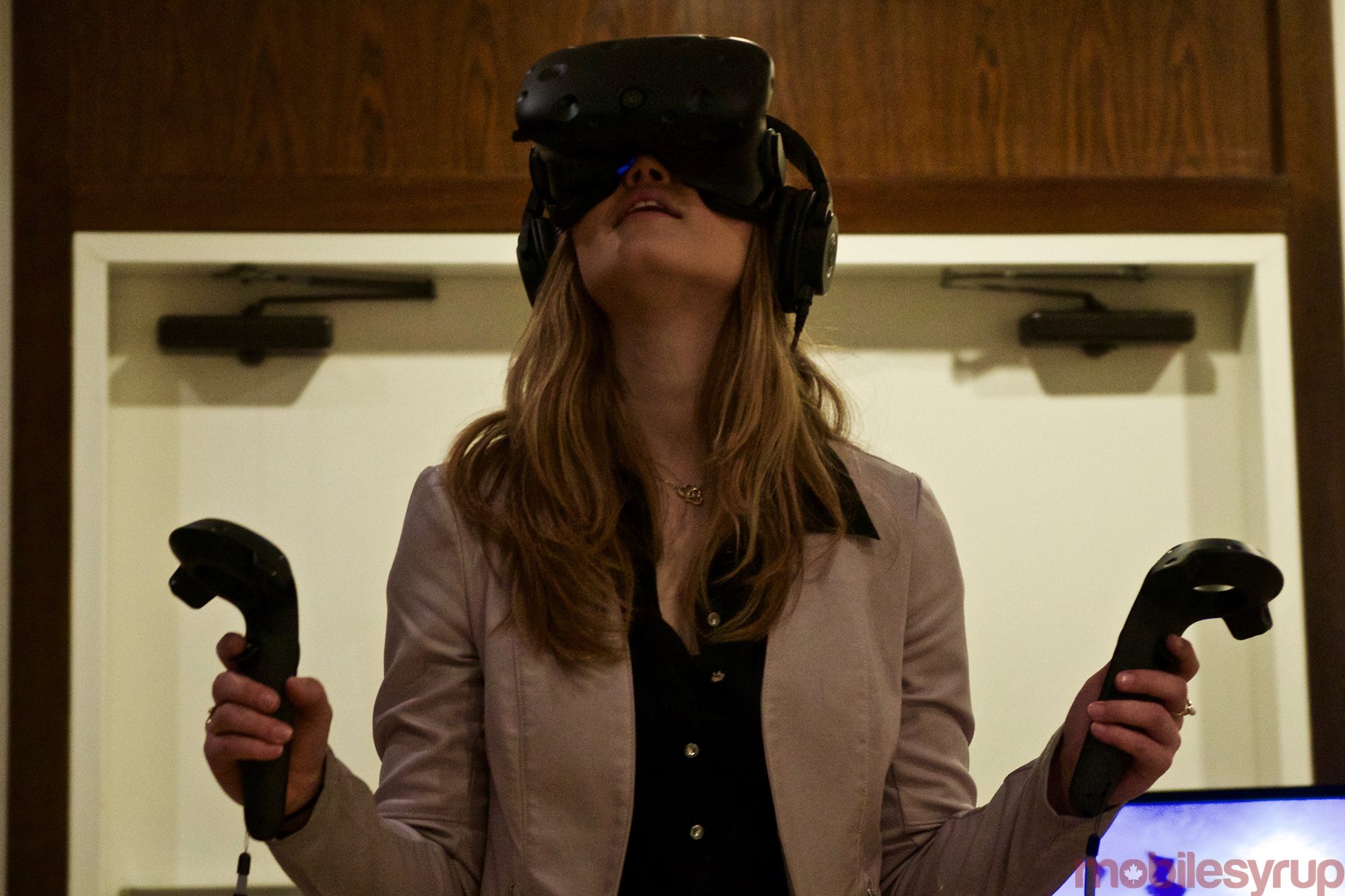
Unlike Patrick and Igor, this was my first time diving head first into the HTC Vive – after we overcame several technical and connectivity issues that is. When the MobileSyrup team went to demo the much-hyped VR gaming system earlier this week, my first thought upon taking it out of the box was “if I was setting this up while alone in my basement, I’d give up now.” The amount of wires and pieces that came out of that box was astounding.
From one VR rookie to another, setting up the system may take longer than the estimated 30 minutes if you don’t have a group of product experts there to help you out like we did. I’m proud to report however, that after discarding the instruction sheet, MobileSyrup was able to wade through the setup process with little difficulty. Almost immediately after putting the headset on, it’s evident that the initial work to put the system together is worth it. Even before the games began, I was welcomed into the world of VR by a comforting starless sky with what appeared to be an image of the Earth projected above my head.
We explored several realities including an underwater adventure, a 3D painting experience and a high-energy space invasion. It’s easy to forget about the two controllers in your hands while they’re serving as laser guns, a paintbrush or even a bow and arrow.
Beyond the experience itself, what really impressed me about the system was its ability to stop users from hurting themselves. As a self-identified clutz and seeking treatment, my fear of walking into a wall was real and imminent.
After outlining the perimeter of the room during the setup process, the device will project a blue grid – called a chaperone – in front of you during games and interactives to alert the user that they’re approaching the perimeter. By selecting the advanced options during setup, users can physically draw around objects and furniture to create a perimeter that’s tailored to whichever room you’re playing in.
I was born to destroy virtual drones. @htcvive https://t.co/9csoiHpLFd
— Jessica Vomiero (@JessicaVomiero) May 3, 2016
In short, beyond the technical aspects of the HTC Vive, I got up close and personal with a whale, painted my name Walt Disney-style and shot lasers at flying aliens before meeting my inevitable, virtual, doom. The experience is quite a trip, and it’s like nothing I’ve ever experienced before. Having tried out the Samsung Gear VR, Oculus, and several unbranded knock-offs, the HTC Vive is truly something else.
Not a nightmare to set up
By Igor Bonifacic
Something we haven’t seen covered a lot in the lead up to the launch of the HTC Vive is a look at how much time and effort is required to get the entire system up and running. After all, the Vive as a product is more than just a virtual reality headset; it takes an entire cast of supporting characters, including a seemingly endless number of cables, to deliver the platform’s superlative virtual reality experience.
When the MobileSyrup team went to demo the Vive, HTC let us unbox a retail Vive unit and set up the entire system, cables and all, ourselves. Following that experience, I’m happy to report despite the impressive (and intimidating) box it comes in, the Vive is relatively easy to set up. It’s by no means a plug and play experience, but even when spotty hotel Wi-Fi prevented the MobileSyrup team from downloading the Vive install app, a tool that provides detailed instructions on how to get the system set up, we were able to assemble all of its components, sussing how each piece fit in bigger picture, with just a bit of help from one of the HTC representatives present at the event.
The component I see causing the most trouble for people are the Vive’s two Lighthouse base stations. Shaped like a small box, the base stations send out infrared lasers to enable accurate tracking of the user as they move around with the Vive on their head and swing around its motion controllers.
For the entire setup to function optimally, these need to be mounted somewhere high up, preferably either on a wall or shelf. There’s also the issue of making enough space to play the Vive’s most interesting games. At the very least, the Vive requires a rectangular play area that measures in at 1.5m by 2m . For some people, even that meagre amount of space will be difficult to carve out in their small apartment.
Space issues aside, the SteamVR software that comes with Valve’s Steam app makes setting up the system and troubleshooting any issues quick and painless. Overall, both HTC and Valve have done a lot of great work to make virtual reality as accessible as possible given the limits of current technology.
Virtual Hunger Games
By Patrick O’Rourke
This is the fourth time that I’ve gone hands-on with the Vive but the first instance where I’ve been able to test out the retail version of HTC and Vive’s ambitious virtual reality effort. While my experience with the device this time was relatively short, I’d say it was probably the first time I’ve been able to fully grasp the headset’s potential in the gaming space.
https://www.instagram.com/p/BFCaHIqkukP/?taken-by=rosebehar
The demo I tried out this time – I specifically asked the VR rep to let me go hands-on with an experience I haven’t tried yet – tasked me with doing my best Hunger Games impression by shooting hordes of arrows at foes in order to protect my castle.
.@JessicaVomiero writing her name in the Vive's Tilt Brush. https://t.co/IoViTBNHuu
— Patrick O'Rourke (@Patrick_ORourke) May 3, 2016
While this demo may sound relatively simple at first, the intuitive and natural feeling action of shooting the virtual bow and arrow hooked me, especially as someone who played around with archery growing up.
Shots needed to be aimed considerably ahead of the oncoming onslaught of enemies in order for my arrows to hit their intended target. The act of pulling the bowstring back, despite the fact that there really was no actual tension in the virtual line, felt real and like I was actually shooting real arrows.
As someone who once wrote about video games full-time, I’ve seen it all and find it difficult to et excited about anything gaming related.
The Vive, however, always finds a way to impress me. It may take a few years, but virtual reality, especially the room tracking VR tech that’s a big part of HTC’s headset, is the future of immersive gameplay.
The loneliness of virtual reality
By Ian Hardy
The Vive is one of the most beautiful VR headsets currently available. I’ve tried a couple virtual reality headsets in the past and the experience was rough. It was a lonely being by myself in a movie theatre.
Recently, I put on Samsung’s Gear VR headset during a Rogers NHL event that took me inside the arena while the All-Star game was happening; this changed my perspective. I was in the stands cheering, riding the Zamboni, and in the scrum with all sports reporters after the game. It was so inclusive and entertaining – everything I thought VR should be.
With the HTC Vive, I heard it was one of the most immersive VR experiences around right now. The headset is well build and feature the usual straps that give you VR hair, or lack of hair in my situation. There are 32 sensors and two controllers that make the experience extremely physical.
In my brief time with the HTC Vive, I found the experience to be wickedly engaging. The content placed in front of me involved whale and a robot shootout. Tilt Brush didn’t work when it was my turn to create art, so I skipped over it.
As for the whale, I found myself on a shipwreck with little fish swimming around me. The controllers gave me the option to swat the fish away when they came close, and the sound was complimentary to what I think it would be like to actually be under water. When the massive whale came to me it felt realistic and so was its massive blinking eye, even to the point that I wanted to touch it, which I’d compare swimming with the dolphins on my recent trip to Mexico.
The shootout was the most compelling demo I experience. This is how I see VR becoming mainstream, especially if this experience was multiplayer. Drones flew around me and I was shooting lasers and bullets with the Vive’s controllers, which also provided haptic feedback when choosing my weapon or firing the gun.
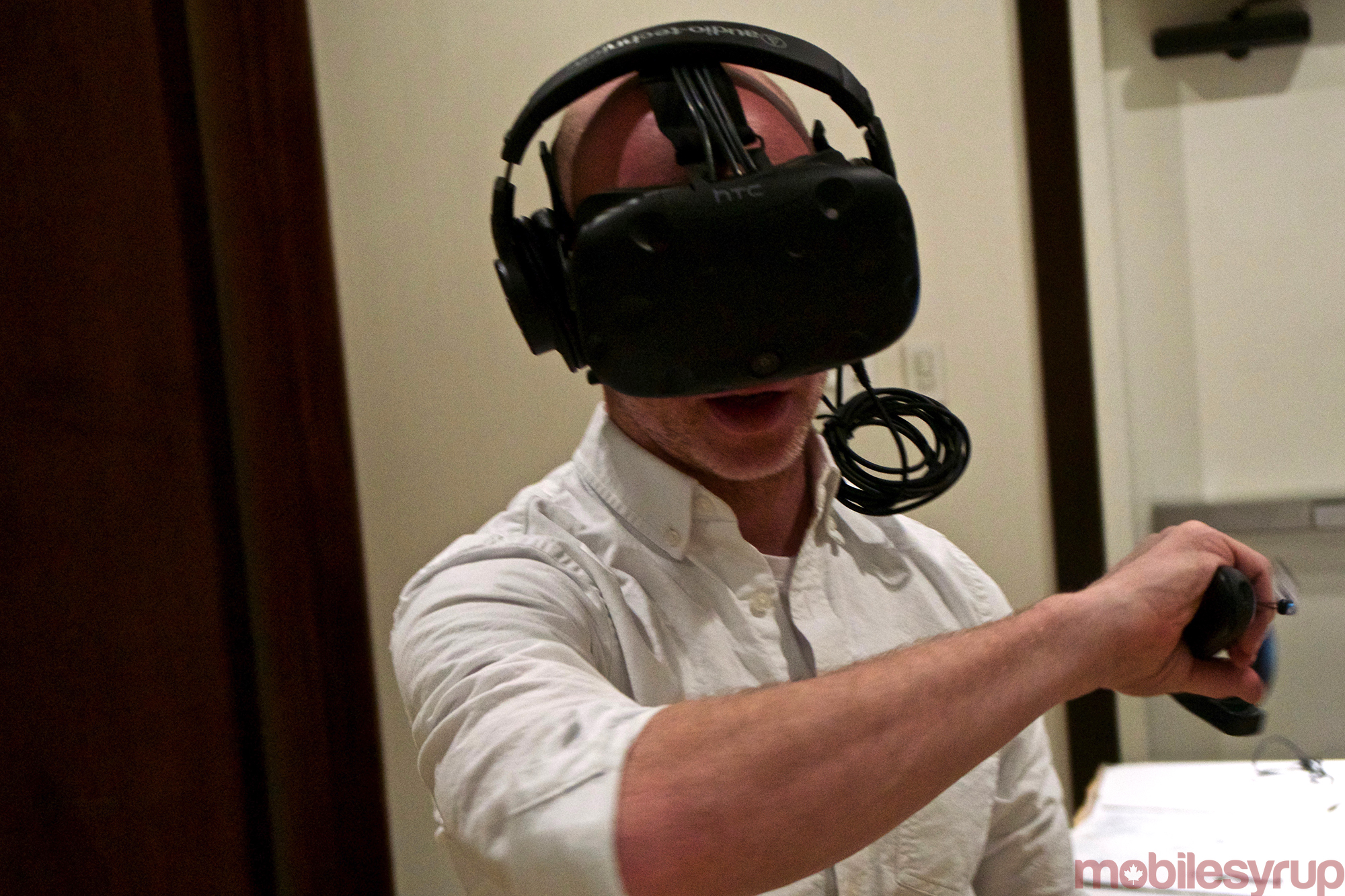
With being so into the experience, however, the real downer was when I took off the headset. The same instant loneliness occurred when I removed the Vive, but this time around I felt I needed to sit and relax before doing my next task. I was somewhat dizzy and disoriented from all the physical movement. Perhaps it was the lack of sleep the previous night, or perhaps not. Maybe it was the whale.
Regardless, the Vive is the most fun I’ve had in a VR headset to-date.

